How COVID-19 has reset Queensland’s education sector and stopped the brain drain
Regional education may be the big winner out of COVID-19, as students look to stay, study and work closer to home.
QLD News
Don't miss out on the headlines from QLD News. Followed categories will be added to My News.
To the bright lights of the city they march. The sparkle of the big smoke with its vast universities, packed student lecture halls, cramped share-house accommodation in a place where no one knows your name, has lured many a regional high school graduate for tertiary studies, in something of a rite of passage.
But in this year that has tossed previous rules and aspirations awry, the pros for staying and studying in Queensland’s largely COVID-19 unaffected regions have come sharply into focus.
Staying close to home has never been more appealing. And regional universities that want nothing more than to stop the “brain drain” of their best and brightest, aren’t letting the opportunity to reinforce their value go to waste.
Best QLD universities helping students land a fulltime job
Regional Queensland university graduates more likely to get a job
Research shows students who study in regional areas of Australia will most likely go on to stay and work in that region. Conversely, students who move to metropolitan areas for their tertiary studies are unlikely to return.
A 2020 report for the Regional Universities Network (RUN) – comprising seven universities based in regional Australia – found seven out of 10 RUN undergraduates go on to work in regional Australia, compared to just 2.5 out of 10 undergraduates who attend non-regional universities. Importantly, the RUN study found the economic impact of the the universities is a driving force in regional economies and helps meet demand for key skills in regional Australia.
It found the universities act as “anchor institutions” in their regions, affecting the size of the local population and contributing $2.4 billion to real GDP in regional Australia and creating 11,300 jobs, a 41 per cent increase since 2015.
The University of Southern Queensland, a member of RUN, has campuses at Toowoomba, Ipswich and Springfield, and has taken active steps in recent years to attract and retain students to study and stay in the region. USQ Vice Chancellor Professor Geraldine Mackenzie says the university has “increased our voice’’ in the tertiary sector, actively promoting its resources and degrees to school leavers, including offering automatic financial scholarships for students who perform academically and also list USQ as their first study preference.
COVID-19 has undoubtedly played a role and Mackenzie says there is a significant increase in USQ applications to enrol for 2021.

“COVID has caused people to stop and think,’’ she says. “The pandemic has really shone a light on the benefits of what is at home, whether it’s tourism, education or employment. People are looking close to home and the regions have become extremely attractive.
“For the community, it’s great to have students studying here. When students drive down the (Toowoomba) range to live and go to university in Brisbane, they are not likely to come back and work here. Once you lose them, you lose them. And without that, we just don’t have a workforce in regional Australia.
“That’s why we set up the law school here because the profession wanted it because they couldn’t get graduates to come and work in the regions. We are hearing anecdotally that students are now feeling more comfortable staying in the regions, rather than having that rite of passage of going to a large metropolitan university. We want them to stay here for the benefit of the community and I think they are seeing that now too.”
Mia Rennick is a country girl through and through.Rennick, 19, of Toowoomba, is studying a four-year Bachelor of Sport and Exercise Science at USQ and intends to remain working in her local community after graduating.

She received a USQ Vice Chancellor’s scholarship (worth $12,000) based on academic achievement at her high school, Downlands College. She also is a recipient of a Queensland Tertiary Admissions Centre (QTAC) Rural and Regional Enterprise scholarship, worth $18,000.
Rennick is highly involved in the Toowoomba community, coaching and captaining the university touch football team and coaching an U16 girls’ touch football team at Downlands.
She has competed in sport at a national level – representing Queensland in athletics for the past eight years in events including sprints, relay, triple jump, long jump and, most recently, 400m hurdles. She was also a state finalist in the Miss World Australia competition on the Gold Coast in June 2019.
Before the chaos of the pandemic, she had several jobs – her own personal training business; working for AFL Qld running Auskick programs at rural primary schools such as Chinchilla and Dalby; as a USQ student ambassador; fixing tractors at a hydraulics company; and tutoring boarders at Downlands College. But COVID-19 wiped it all away and she found herself out of work.
She was later offered a position as a boarding supervisor at Downlands College and she is now employed there full time in enrolments and marketing while still completing her studies.

“Even though Toowoomba is quite large now, there is still a small town feel where everyone looks after each other,” Rennick says.
“A really great change to come out of COVID is that people are realising it’s a good option to stay regionally. It’s been a bit of a wake-up call. It’s taking them back to their rural roots and back to where they have come from. And people can see that what the regions have to offer is just as good as what is on offer in the cities.”
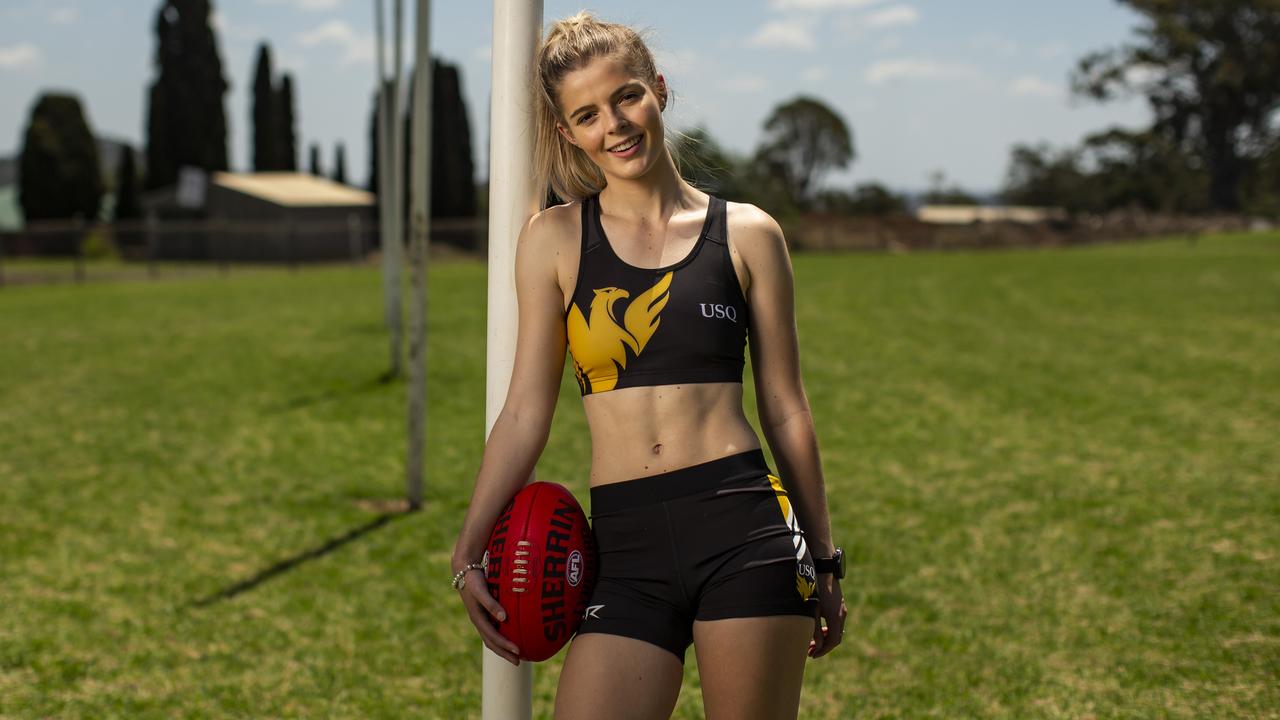
Rennick is currently looking at building a house in the Toowoomba area and plans to complete her undergraduate degree, followed by a Masters of Business, with a goal of working in clinical exercise physiology. “There are extensive opportunities rurally,” she says.
“If every regional kid moved to the city, what would the next generation have? It’s very important we keep the regional economies going.”
High-achieving Toowoomba teenager Georgia Poole also plans to put her regional education to good use in her local community.
Poole, 18, of Flagstone Creek in the Lockyer Valley, southwest of Toowoomba, graduated from Downlands College as 2019 dux and as top student in the subjects of physics, chemistry and biology. After completing an internship at Queensland University of Technology in Brisbane in Grade 12, she settled on USQ as her first preference to study a Bachelor of Biomedical Sciences, receiving a Chancellor‘s Excellence Scholarship worth $18,000 over her three-year studies, plus a $5000 study overseas travel bonus.

Poole says she considered Brisbane university options but staying locally won out.
“The scholarship was definitely an incentive to put USQ as my first preference,’’ she says. “The uni is also close to home and I didn’t have to worry about living expenses. The scholarship sort of topped it off.’’
Poole plans to sit for the Graduate Medical School Admissions Test (GAMSAT) at the end of her undergraduate degree and study medicine, possibly specialising in thoracic surgery or anaesthesiology.
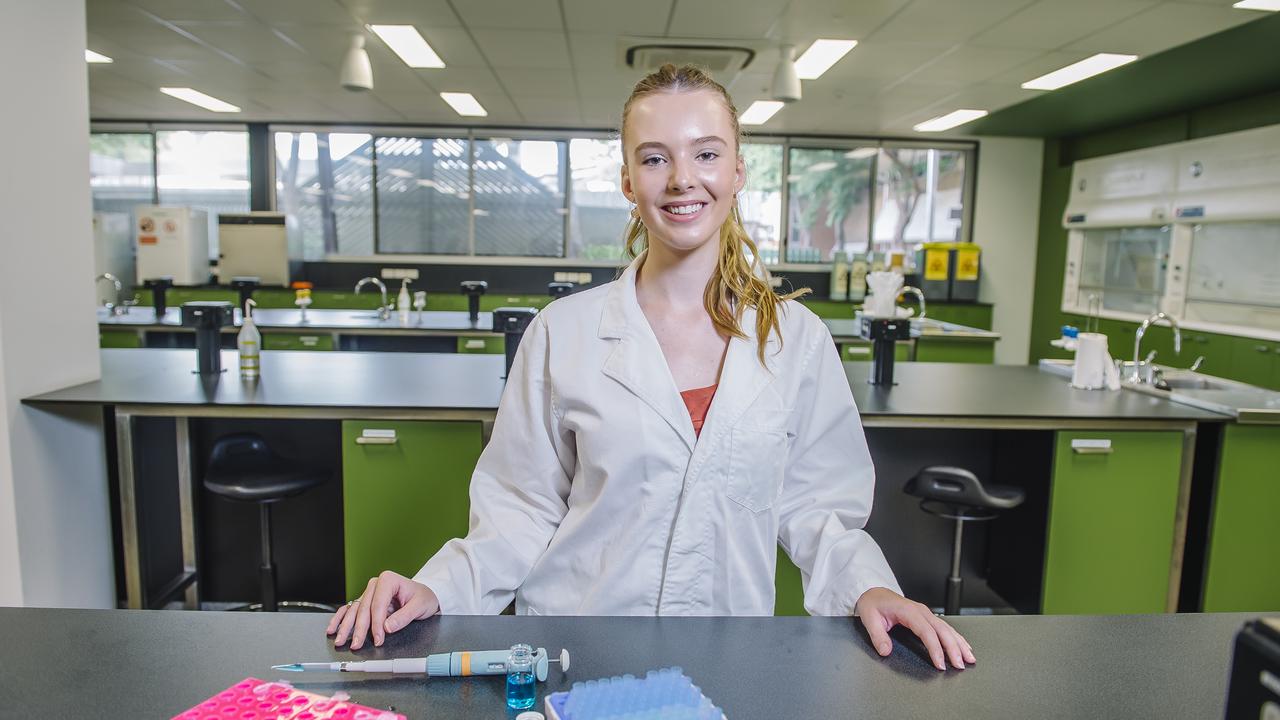
USQ doesn’t offer medicine but Poole plans to return to work regionally when she is qualified. “I’m hoping to stay living regionally,” she says. “I think there is also slightly better employability going to regional universities and applying for jobs in the regions, particularly for regional medical jobs.
“It’s important to have doctors and medical staff in regional areas. Regional communities need that. From what I understand, there’s a high demand for medical jobs in the regions. It’s a shame if the most talented students go off to the city and not come back.’’
Matthew Guevarra-Adams, 20, of Oxley, in southwest Brisbane, is in his third year of a Bachelor of Aviation majoring in flight operations at USQ’s Springfield campus.
With a goal of becoming an international commercial pilot, he was attracted to the resources available – industry leading equipment and technology including a Boeing 737 simulator at Springfield campus and an Airbus A320 simulator at Toowoomba which is the only one of its kind in the southern hemisphere.
After graduating from Corinda State High School where he was school captain, he won a USQ Future Community Leadership Scholarship worth $6000 over his three-year degree. As a teenager, he was in the Australian Air Force Cadets and he now instructs cadets. At USQ, he is a senior student ambassador, aviation club vice president and Australian Youth Aerospace Association (AYAA) liaison.

“USQ Springfield was a local university for me so it wasn’t very far to travel, plus I received a scholarship. It’s been brilliant,” Guevarra-Adams says.
“The lecturers are very supportive with a sense of mateship. Given our smaller cohort compared to other university programs, we could engage with the lecturer more, there’s greater interaction.
“My end goal is to be an international commercial pilot. Obviously with what’s going on in the industry at the moment (with COVID), I’ve had to change avenues but I’ve actually found a possible
role that I want to do and that’s to become
a flight instructor.
“After teaching aviation to the students at cadets, I get a real sense of enjoyment when they can apply what I’ve taught them. Studying locally is good for the local economy and it keeps you connected to where you are from.”
It’s unlikely to find a more passionate advocate for regional education than John Cole, Pro Vice Chancellor for engagement at USQ.
Cole founded the university’s Institute for Resilient Regions in 2014, building research and engagement to address “social, economic, health, behavioural and cultural challenges facing regions across Australia”.

Born and raised at Murgon, 270km northwest of Brisbane in the South Burnett region, Cole, 65, is passionate about the transformative effect of education. “I was one of those kids from the farm who went to university and whose world was transformed,” he says.
“This narrative we have in Australia that if you don’t live in the cities you’ve got to have a second-class life is absolute nonsense.
“Sadly, over the years, many of the brightest people from regional families have gone to universities in the city and they don’t come back. So we have a brain drain. This is one of the reasons why regional universities are so important.
“We want to raise awareness and aspirations in populations that historically haven’t attended higher education. At USQ we are working proactively in schools, even to the point of looking at primary schools, because it’s in primary schools where life aspirations are formed. Kids need to know you can live in Ipswich and become an astronaut, you can grow up in Cunnamulla and become a leading agricultural engineer, or grow up in Taroom and become a doctor.”
USQ was founded as a result of community agitation after a campaign for a new university to be built in Toowoomba was taken to then prime minister Robert Menzies in the late 1950s.
Menzies challenged the community to raise 30,000 pounds as a starting point – which it did – leading to federal support. In 1960, the Darling Downs University Establishment Association was founded, followed by the Queensland Institute of Technology Darling Downs opening in 1967 with 18 staff and 140 students.
In 1971, it became the Darling Downs Institute of Advanced Education, followed by the University College of Southern Queensland in 1990 and finally the University of Southern Queensland in 1992. It now offers more than 115 study disciplines – including “bread and butter’’ programs of teaching, nursing and engineering – and has more than 100,000 alumni and about 26,000 current students. As an early innovator of online education, the student cohort includes 17,000 students studying online.
The biggest cohort are mature-aged students (65 per cent) with about 10 per cent international students who are mostly from the sub continent region including India, Bangladesh and Sri Lanka.
Positioning itself as “a regional university with a global outlook”, USQ has collaborations with more than 50 national and international industry partners and has been recognised for its research excellence with 30 fields of study noted as world class or well above world class by the federal government’s Excellence in Research for Australia (ERA) index.
Astrophysicist Professor Jonti Horner has travelled halfway around the world to work under the clear, dark regional skies outside Toowoomba. Horner, 42, is a planet hunter, the Sherlock Holmes of the stars. He searches for planets around other stars and studies which of these have most potential in the search for life beyond Earth.
The English-born, Durham and Oxford University-educated scholar is a world expert in his field and has been based at USQ as a senior research fellow since 2014.
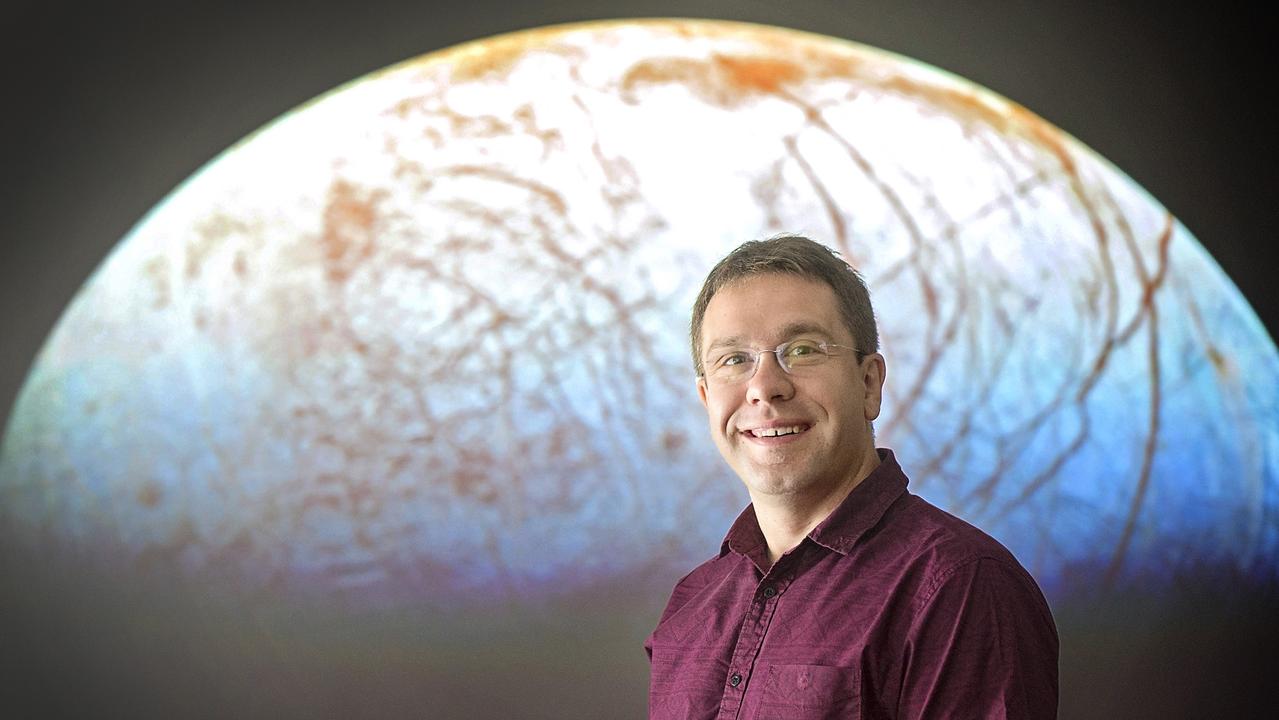
Horner says he is thrilled to work at the university’s research grade Mount Kent space observatory that has a partnership with NASA in the search for new planets. The German Aerospace Center (DLR) also has a space debris monitoring and tracking telescope at the observatory. “It’s not just a small regional university here, we’re world leaders,” Horner says.
“I’d argue USQ is the leading institution in Australia for this work. There are others doing it but we are the biggest concentration of researchers focused on finding alien worlds. We have our own fabulous, dedicated observatory at Mount Kent with a multimillion-dollar facility that is working with NASA. It’s a big deal for us.
“I’m delighted to be here. People overseas are very interested in what we are doing here.
“My intention is to make the rest of my career at USQ, I’ve got no intention of moving anywhere else. If I have the option, I’d hope to stay here forever. It’s got everything I need, I’m really well supported, it’s a lovely environment to work in and I’m part of a community.”
Another researcher with a national vision is Professor of psychology and research program director at USQ’s Centre for Health Research, Sonja March. She has secured a $5 million federal government grant as part of the Million Minds Mental Health Research Mission to develop a new public health website for children and adolescents suffering anxiety, depression, sleep or substance use. The as-yet-unnamed platform will launch mid 2021 and create comprehensive individual assessments and psychological treatment programs.
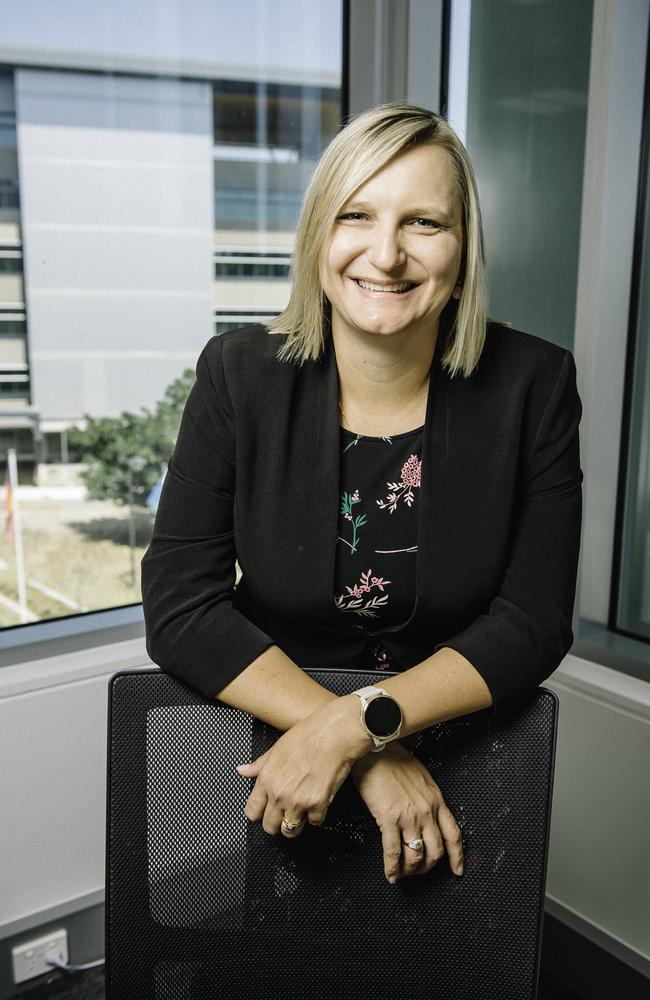
USQ is the project’s lead institution with Brisbane’s University of Queensland, Griffith University and Queensland University of Technology, Ballarat’s Federation University and The Australian National University in Canberra. Professor March, who is based at the Springfield campus, is the chief investigator.
It follows March’s successful work with a free interactive online program for the prevention and treatment of childhood anxiety called BRAVE that now has more than 50,000 registered users across Australia. “A lot of the time people assume nothing is happening in the small regional universities,” March, 41, says. “But we are doing a lot of good work and it’s important to highlight those things.
“Working in a regional university, you get the chance to interact with the community and you get a much greater feel of the impact that your research can have in the real world and in the lives of people. It’s not as abstract, you really can feel like you are making a difference. We can see a lot more value in our local communities and what our education institutions can offer.”
The university is also home to the Centre for Future Materials that pioneers research and development of new materials, including aerospace composites, to be used in the aviation and defence sectors.
There’s also the Centre for Applied Climate Sciences, directed by one of the world’s most eminent climate scientists and “father of the SOI” (Southern Oscillation Index) Professor Roger Stone, 72. He is president of the World Meteorological Organisation’s Commission for Agricultural Meteorology which is an agency of the United Nations.
Since 2007, the university also has had a presence in Stanthorpe, 217km southwest of Brisbane, with the $8.5 million state-of-the-art training facility, Queensland College of Wine Tourism, a joint venture with the Department of Employment, Small Business and Training.
Geraldine Mackenzie, 58, a lawyer, who began at USQ as the foundation head of the university’s law school in 2007 and 2008, and has returned in her first vice chancellor role, says she is committed to regional universities.
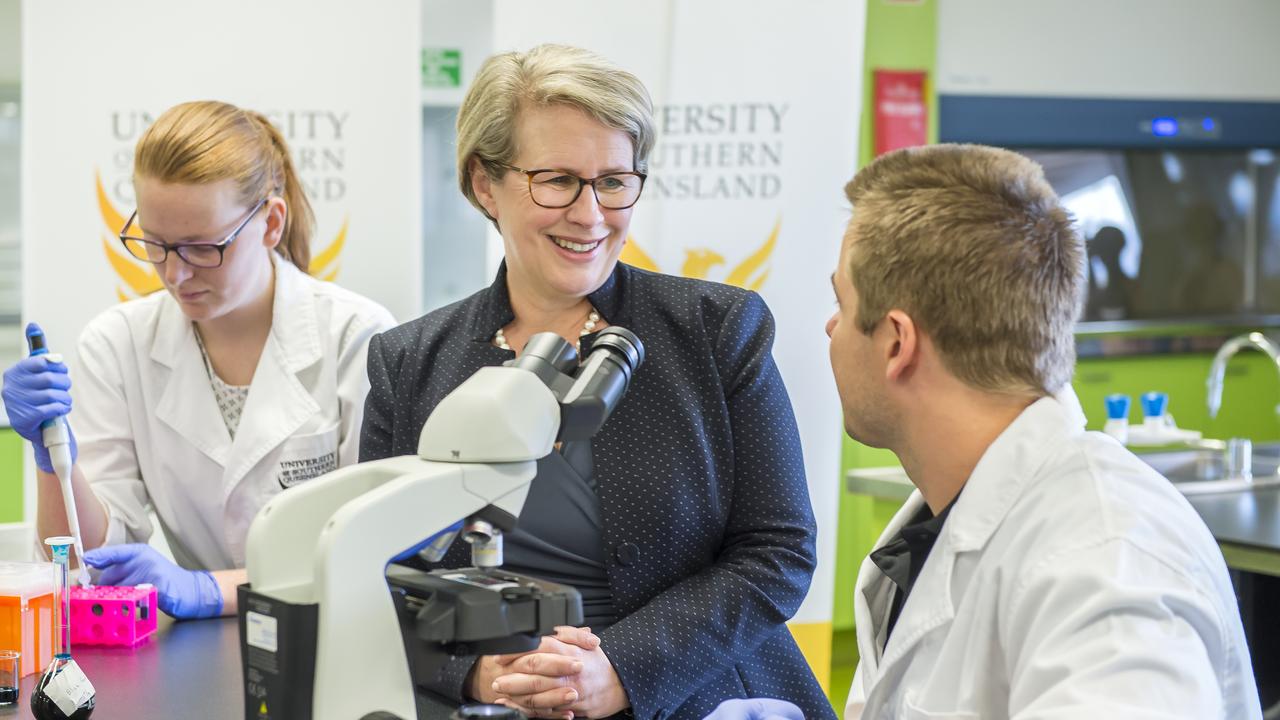
“Toowoomba loves having students here and it’s really made Toowoomba into quite a university city,’’ she says. “That’s why universities like USQ were set up, so that we have all the benefits and prosperity that a university brings. And the jobs are there for the students, so industry, government and business get the benefit of it as well. It’s a win-win for everyone.
“Hopefully COVID will change this but it is difficult to recruit professionals to regional areas as they tend to want to stay in metropolitan areas. So this (COVID-19) has been an opportunity to reset and for people to realise we have a fantastic university here. We are clean, green and safe. We don’t have high density living. The university is spread out and our students can feel really safe coming here.”
John Cole says COVID-19 has been a reminder that there is vast opportunity and talent outside the big cities. “USQ gets overlooked because it’s not in Brisbane or Sydney but there’s incredible work being done here,” he says.
“COVID has reminded us there is amenity, there is safety, there is opportunity outside the cities. I can’t think of anything more transformative for regional kids than the opportunities of education. Through education, there is no horizon. There are unlimited possibilities.”
Originally published as How COVID-19 has reset Queensland’s education sector and stopped the brain drain







